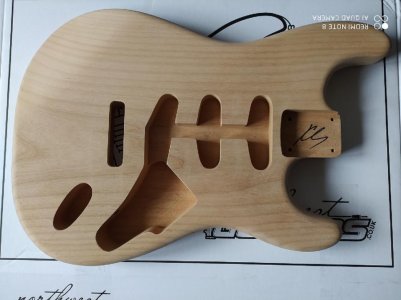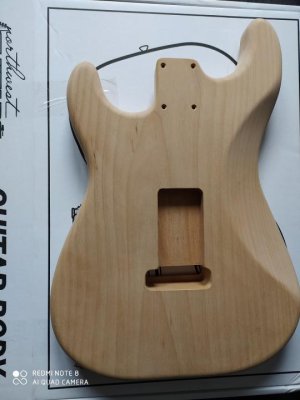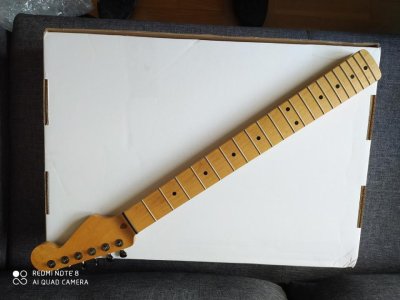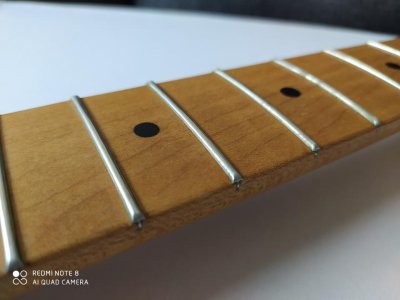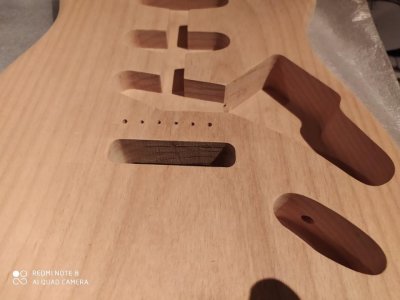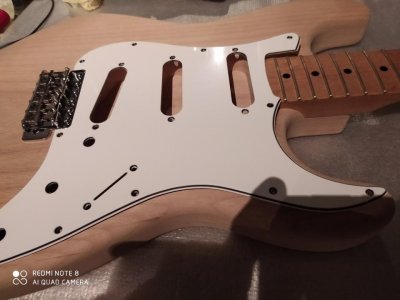playas
Well-known member
In a way I hate the idea of posting this here because it takes away some of my excuses for procrastination, but that's also a good reason in favour too...
Anyway, this is something I have been thinking about and it's a good time for it I reckon.
I recently picked up an alder body from Northwest guitars.
The idea is to put together a vintage 'style' 3 tone sunburst strat.
'Style' because I am absolutely not trying to make a strict copy of a vintage guitar and it will not be reliced. I just want something that feels comfortable, has a decent finish (i.e. not thick poly) and looks superficially like an older sunburst strat and if at all possible, resonates well. I've no problem with it picking up a natural relic later, but won't do anything to beat up the guitar.
FYI I haven't been able to upload pics yet, but I will do asap.
I am hoping to get a local guy to paint the body in sunburst once I have all necessary drilling and sanding done, but if that doesn't work out I will try my hand at finishing it myself.
It will be my first build and my first SSS strat. I have a pickup set ready and the neck is a maple neck I bought here on the forum some time ago.
I've had it several years but despite having it on a guitar I never put a finish on it. I have decided to put the original neck back on that guitar and use the maple neck for a new parts build.
Unfortunately, the majority of the remaining parts were delayed as I ordered them in the same place and one of them was back ordered. I'll be using the time for sanding the body and preparing the neck.
I'll continue to add to this as I go.
Anyway, this is something I have been thinking about and it's a good time for it I reckon.
I recently picked up an alder body from Northwest guitars.
The idea is to put together a vintage 'style' 3 tone sunburst strat.
'Style' because I am absolutely not trying to make a strict copy of a vintage guitar and it will not be reliced. I just want something that feels comfortable, has a decent finish (i.e. not thick poly) and looks superficially like an older sunburst strat and if at all possible, resonates well. I've no problem with it picking up a natural relic later, but won't do anything to beat up the guitar.
FYI I haven't been able to upload pics yet, but I will do asap.
I am hoping to get a local guy to paint the body in sunburst once I have all necessary drilling and sanding done, but if that doesn't work out I will try my hand at finishing it myself.
It will be my first build and my first SSS strat. I have a pickup set ready and the neck is a maple neck I bought here on the forum some time ago.
I've had it several years but despite having it on a guitar I never put a finish on it. I have decided to put the original neck back on that guitar and use the maple neck for a new parts build.
Unfortunately, the majority of the remaining parts were delayed as I ordered them in the same place and one of them was back ordered. I'll be using the time for sanding the body and preparing the neck.
I'll continue to add to this as I go.

